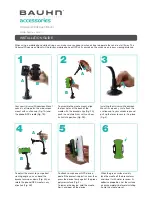
2.7 TRANSPORT SAFETY
8
1.
Comply with state and local laws governing
highway safety and movement of farm ma-
chinery on public roads.
2.
The use of flashing amber lights is acceptable
in most localities. However, some localities
prohibit their use. Local laws should be
checked for all highway lighting and marking
requirements.
3.
At all times, when driving the tractor and
equipment on the road or highway under 20
mph (32 kph) use flashing amber warning
lights and a slow moving vehicle (SMV)
identification emblem. Do not exceed 20 mph
(32 kph). Reduce speed on rough roads and
surfaces.
4.
Keep tractor in gear to provide engine braking
when going downhill. Do not coast.
5.
Plan your route to avoid heavy traffic.
6.
Keep brake pedals latched together at all
times.
7.
Do not drink and drive.
8.
Be a safe and courteous driver. Always yield
to oncoming traffic in all situations, including
narrow bridges, intersections, etc. Watch for
traffic when operating near or crossing
roadways.
9.
Turn into curves or go up or down hills only at
a low speed and at a gradual steering angle.
Make certain that at least 20% of the tractor's
weight is on the front wheels to maintain safe
steerage. Slow down on rough or uneven
surfaces.
10. Keep loader in a low position when traveling.
Remember, the higher the loader, the higher
the center of gravity with increased risk of the
unit upset.
11. Never allow riders on either tractor or ma-
chine.
2.8 MAINTENANCE SAFETY
1.
Good maintenance is your responsibility.
Poor maintenance is an invitation to trouble.
2.
Follow good shop practices.
- Keep service
area clean and
dry.
- Be sure electrical
outlets and tools
are properly
grounded.
- Use adequate
light for the job at
hand.
9.
Periodically tighten all bolts, nuts and screws
and check that all cotter pins are properly
installed to ensure unit is in a safe condition.
10. When completing a maintenance or service
function, make sure all safety shields and
devices are installed before placing unit in
service.
8.
A fire extinguisher
and first aid kit
should be kept
readily accessible
while performing
maintenance on
this equipment.
3.
Make sure there is plenty of ventilation.
Never operate the engine in a closed building.
The exhaust fumes may cause asphyxiation.
4.
Before working on this machine, lower loader
arms and forks to the ground, shut off the
engine, set the brakes, and remove the
ignition key.
5.
Never work under equipment unless it is
blocked securely.
6.
Use personal protection devices such as eye,
hand and hearing protectors, when performing
any service or maintenance work.
7.
Where replacement parts are necessary for
periodic maintenance and servicing, genuine
factory replacement parts must be used to
restore your equipment to original specifica-
tions. The manufacturer will not be responsi-
ble for injuries or damages caused by use of
unapproved parts and/or accessories.












































